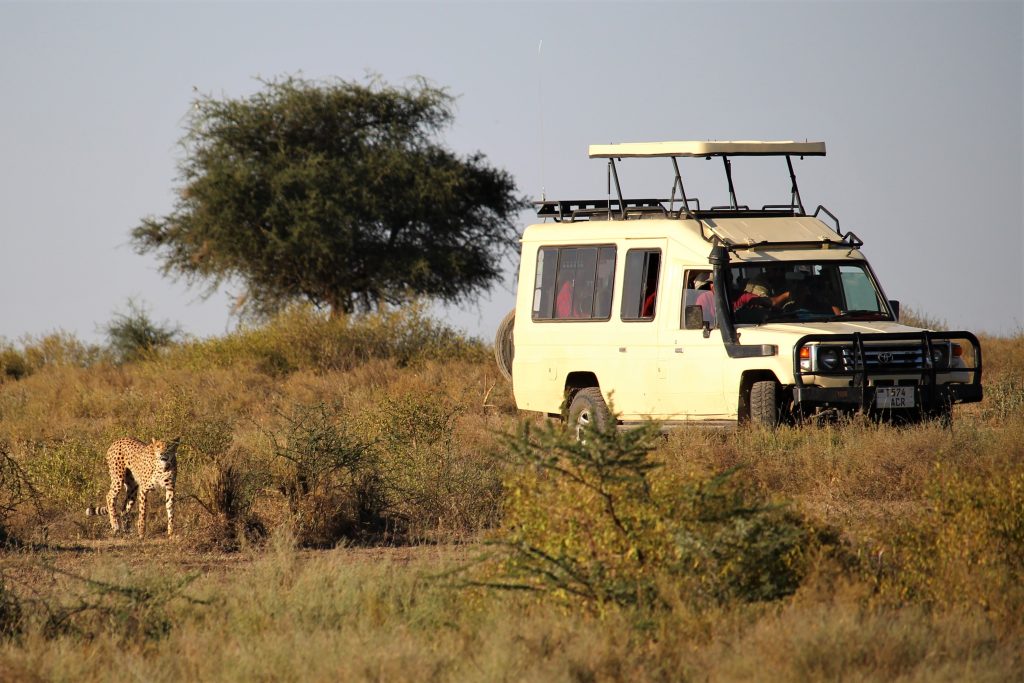Tanzania, with its breathtaking landscapes and abundant wildlife, is a top destination for safari enthusiasts. Whether you dream of witnessing the Great Migration on the Serengeti plains or spotting the Big Five in their natural habitat, choosing the right time to visit is crucial for an unforgettable experience. In this article, we’ll guide you through the best time to visit Tanzania for safari adventure that will leave you in awe of the wonders of the African wilderness.

-
Dry Season (June to October): The Peak Safari Season
The dry season, from June to October, is arguably the best time for a Tanzanian safari. During this period, the weather is cool and dry, making it ideal for game drives. Wildlife congregates around water sources, making it easier to spot them. The Great Migration, one of nature’s most incredible spectacles, typically occurs between June and July, as millions of wildebeests and zebras migrate in search of greener pastures. Witnessing this migration is a bucket-list experience for many safari-goers.
-
Shoulder Season (November to December): Fewer Crowds, Pleasant Weather
The shoulder season, from November to December, is an excellent time to visit Tanzania for safari. The weather remains pleasant, and there are fewer tourists compared to the peak season. You can still witness wildlife in abundance, and the landscape is lush and green after the short rains, providing a beautiful backdrop for your safari adventures.
-
Short Rains (November to December): Unique Bird-watching Opportunity
Though November and December bring short rains to Tanzania, they are typically brief afternoon showers. This season is ideal for bird-watching, as migratory birds arrive, and the landscape becomes lush and vibrant. If you have a keen interest in avian species, this is a great time to visit.
-
Long Rains (March to May): The Green Season
The long rains, which occur from March to May, are considered the low season for safaris in Tanzania. While the frequent rainfall can make roads muddy and some areas inaccessible, this season has its own unique charm. The landscape transforms into a lush paradise, and you can witness the birth of many animal species. Fewer tourists also mean lower prices and more exclusive safari experiences.
-
Wet Season (January to February): Ideal for Bird-watching and Photography
The wet season, from January to February, is another great time for bird-watching and photography. While the landscape may still be green and beautiful, some areas may be inaccessible due to muddy conditions. However, if you’re a wildlife photographer looking for unique shots, this can be an excellent time to visit.
-
Considerations for Climbing Kilimanjaro
If climbing Mount Kilimanjaro is on your bucket list, the best time is during the dry season (January to March or June to October). The clear skies and mild temperatures make for the best climbing conditions. However, Kilimanjaro can be climbed year-round, so choose the time that suits you best. Read Kilimanjaro packing list and Kilimanjaro FAQs.
In conclusion, Tanzania offers a year-round safari experience, each season offering its own unique advantages. Your choice of the best time to visit will depend on your priorities, whether it’s witnessing the Great Migration, enjoying pleasant weather with fewer crowds, or experiencing the lush beauty of the wet season. Plan your Tanzanian safari adventure accordingly, and you’ll undoubtedly create lasting memories of Africa’s astounding wildlife and landscapes.









